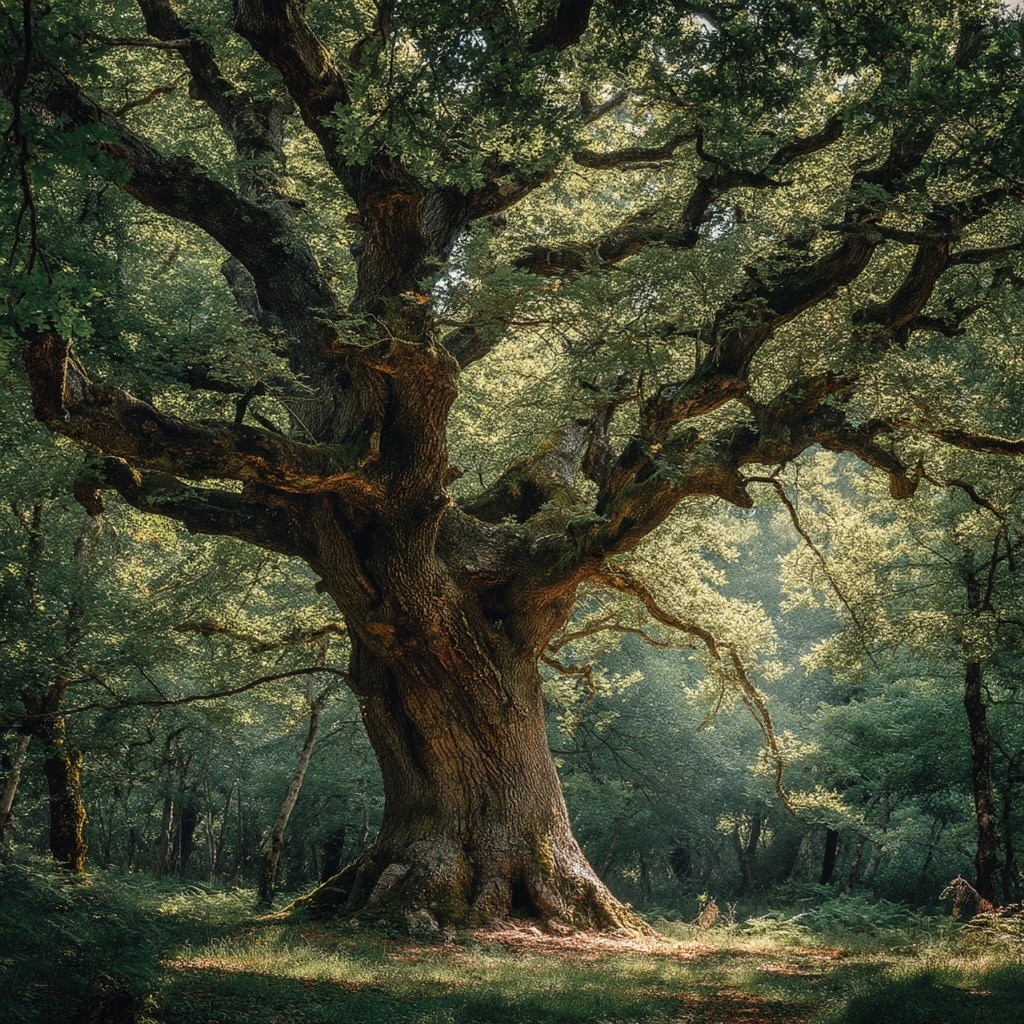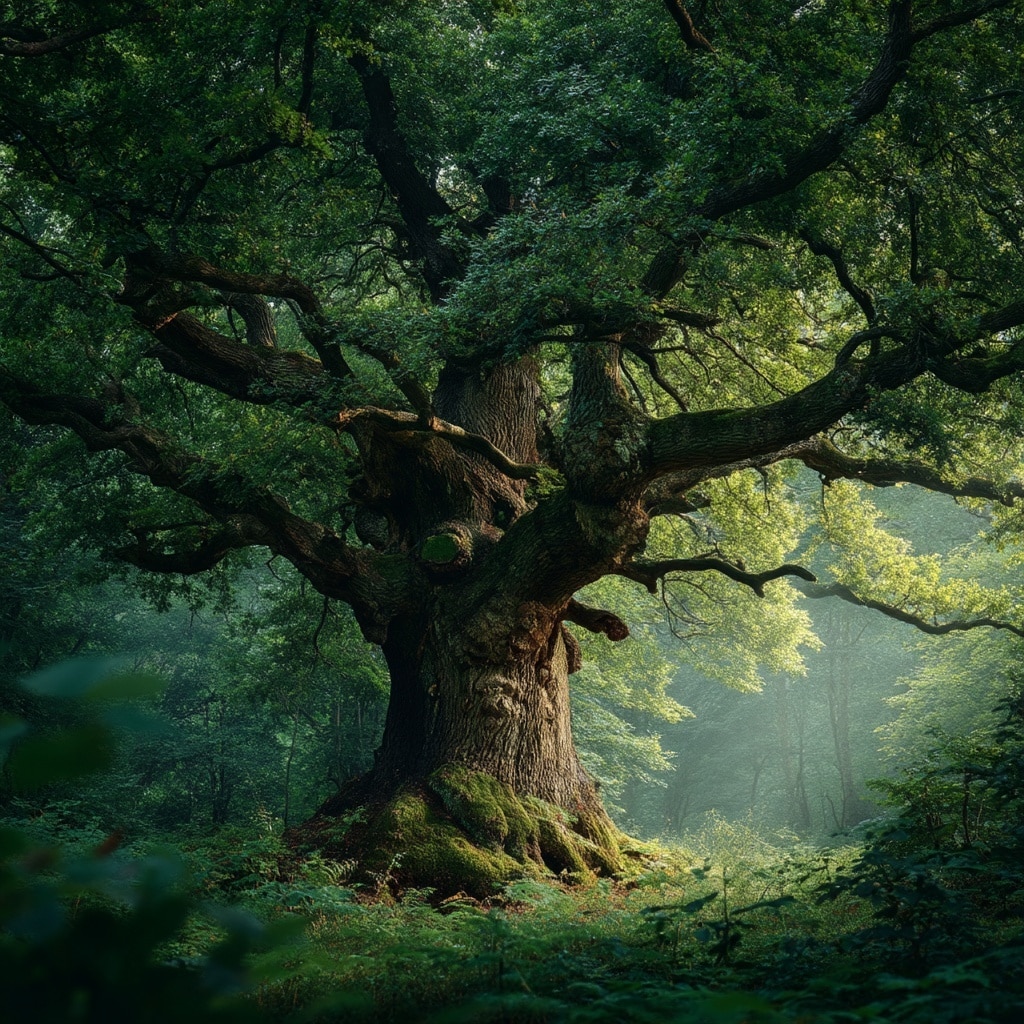Tree varieties across the globe offer more than just shade and scenery—they’re essential parts of ecosystems, cultural traditions, and even human health. While many of us are familiar with the typical backyard tree or forest giant, some species stand out for their appearance, history, or symbolism. In this guide, we’ll look at six of the most unique tree types in the world. From centuries-old oaks to delicate sakura blossoms, each tree tells a story that’s as rooted in nature as it is in our collective human experience.
Table of Contents
Oak Tree: The Mighty Forest Guardian
Few trees carry the same strength, symbolism, and ecological importance as the oak tree. Revered across cultures and continents, the oak stands tall as a symbol of endurance and wisdom. It’s not just its size that makes it remarkable—it’s the diversity and role it plays in sustaining forest life.
There are over 500 species of oak trees, ranging from the majestic white oak to the adaptable pin oak and the evergreen Japanese oak. Their leaves vary dramatically: some are lobed, others serrated, and a few with smooth edges—each type suited to different climates and soil conditions.
Mature oak trees can soar to heights of 70 feet or more, with canopies spreading wide enough to shelter entire ecosystems. Some ancient oaks, like the one at Goose Island State Park, stretch over 135 feet in length and nearly 9 feet wide, making them among the largest living tree specimens in North America.
But it’s not just their size that impresses. A single oak tree can absorb up to 50 gallons of water daily, filtering and stabilizing the soil in the process. They thrive best in humus-rich, well-drained soil and full sunlight. Young trees need consistent watering, while mature oaks become resilient to drought, making them a versatile addition to native landscapes.
Ecologically, oak trees support a remarkable variety of life. Their branches host hundreds of species of caterpillars, birds, squirrels, and even deer. Their acorns are a vital food source, especially in the autumn months. Through photosynthesis, oak trees play a crucial role in converting carbon dioxide into oxygen, helping to combat climate change and air pollution.
If you’re planting an oak in your garden, consider varieties native to your region, such as:
- White Oak (Quercus alba)
- Bur Oak (Quercus macrocarpa)
- Willow Oak (Quercus phellos)
Each species offers something unique—whether it’s drought tolerance, stunning fall color, or a haven for wildlife.
Acorn Tree: Nature’s Nut-Bearing Provider
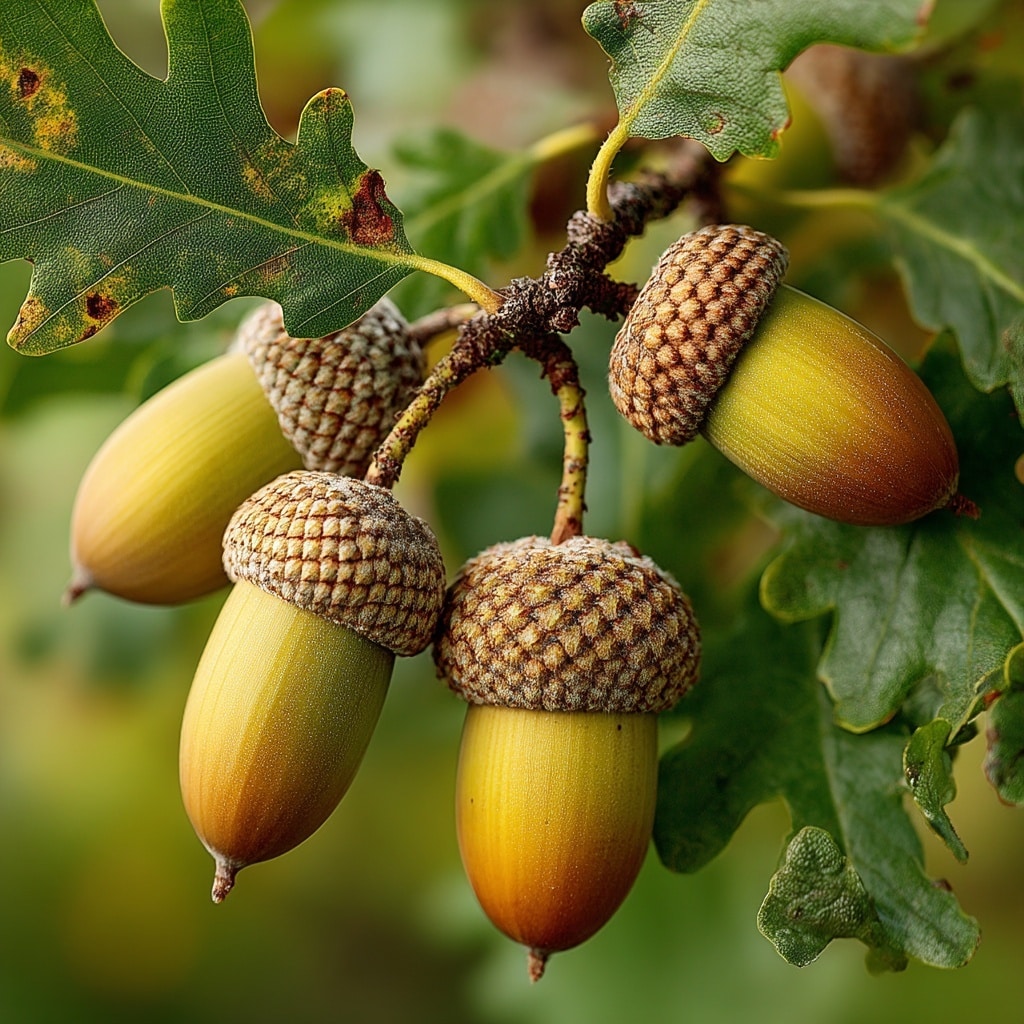
Though often mistaken as a separate species, the acorn tree is actually another name for the oak tree—specifically referring to its nut-bearing nature. Every tree that produces acorns is a type of oak, and these small, hard-shelled nuts play a critical role in forest ecosystems.
Acorns are more than just squirrel snacks. They’re an essential source of protein and fats for wildlife like jays, deer, turkeys, and mice. In traditional cultures, acorns have also been used as a food source for humans, ground into flour or roasted for survival during harsh seasons.
Visually, acorn-producing trees are majestic. They often feature a straight trunk and spreading branches, forming a balanced, rounded crown. Leaves are typically small, green, and concentrated toward the ends of branches. Each tree doesn’t produce acorns every year—most have a masting cycle, where they yield a heavy crop only once every few years. This natural rhythm helps regulate wildlife populations and ensures the forest stays in balance.
In autumn, communities throughout history have gathered fallen acorns for food and trade. Today, these practices live on in heritage foraging traditions and educational forest schools. Whether gathered by hand or with the help of tools like acorn graters, harvesting from acorn trees connects people to seasonal rhythms.
What makes these trees even more remarkable is how they balance ecological roles and cultural heritage. In many Native American and European traditions, the acorn is a symbol of potential and strength, sprouting into mighty oaks given time and care.
💡 Fun fact: Birds like mockingbirds and jays often cache acorns by hiding them in the ground, unintentionally helping new oak trees sprout far from their parent tree.
Weeping Willow: Grace in Motion
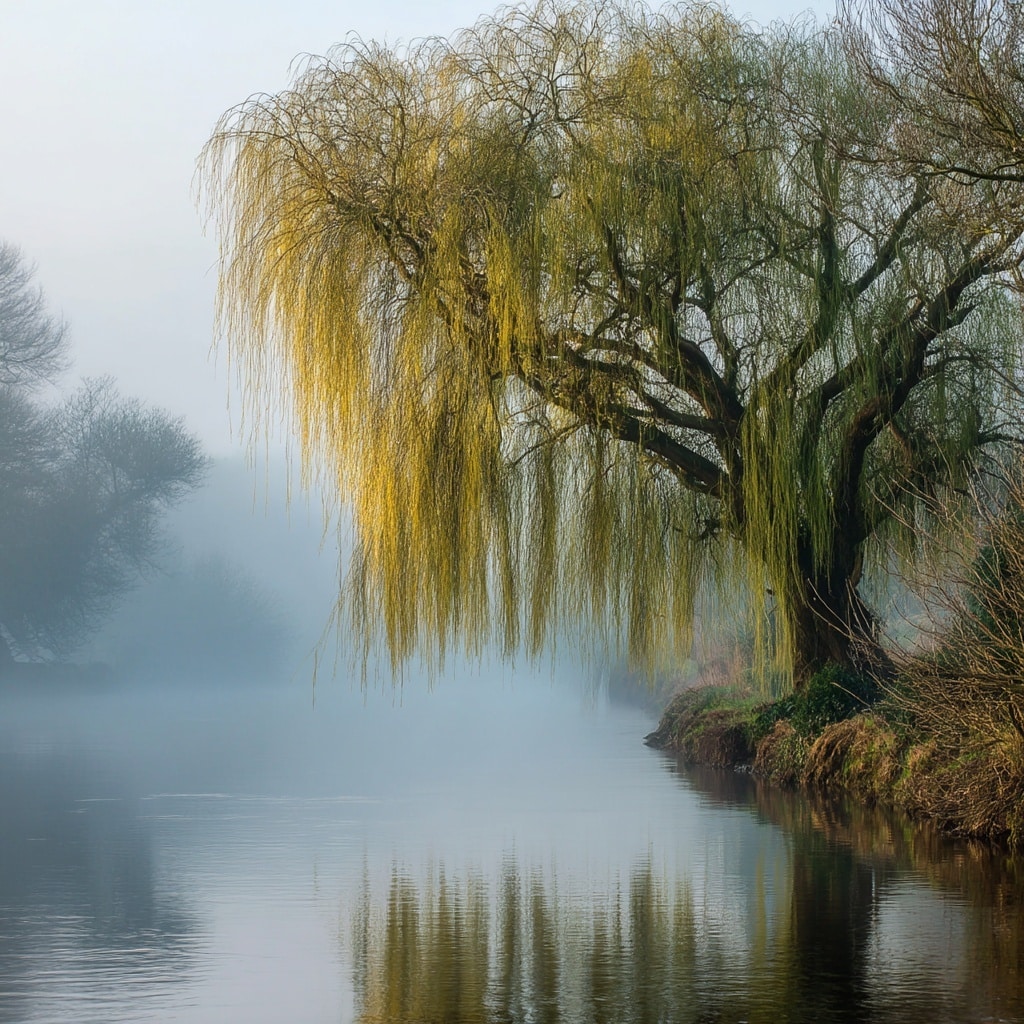
Among all tree species, the weeping willow stands out with its elegant form and emotional symbolism. Known for its sweeping, curtain-like branches and slender, heart-shaped leaves, this tree adds a soft, almost poetic presence to any landscape.
Native to parts of China and now found worldwide, the weeping willow thrives near water—ponds, rivers, and lakeshores—where its roots can access steady moisture. Its branches arch downward, creating a tranquil, shaded canopy that moves rhythmically with the breeze. This visual effect gives the tree its “weeping” name, though its beauty evokes serenity rather than sorrow.
In many cultures, particularly in Japan and East Asia, the weeping willow holds deep spiritual meaning. It’s often planted in memory of loved ones, symbolizing mourning, healing, and renewal. Some traditions involve decorating young willow branches with flowers or charms during remembrance ceremonies.
From a horticultural perspective, the weeping willow grows quickly and can reach up to 40–50 feet tall. However, its fast growth comes with trade-offs: its wood is soft, and it may not withstand severe storms. Still, when planted in the right spot—with ample water and room to spread—this tree becomes a living sculpture in the garden.
Weeping willows also provide shelter and food for birds and insects. Their dense foliage creates a safe nesting site, and their proximity to water attracts frogs, dragonflies, and butterflies. If you’re designing a water feature or rain garden, the weeping willow can serve as both a practical and aesthetic focal point.
🌱 Care tip: Prune young trees regularly to manage shape and prevent low-hanging branches from becoming too heavy. Avoid planting too close to plumbing or foundation structures, as the roots seek out water aggressively.
Sakura Tree: The Spirit of Spring
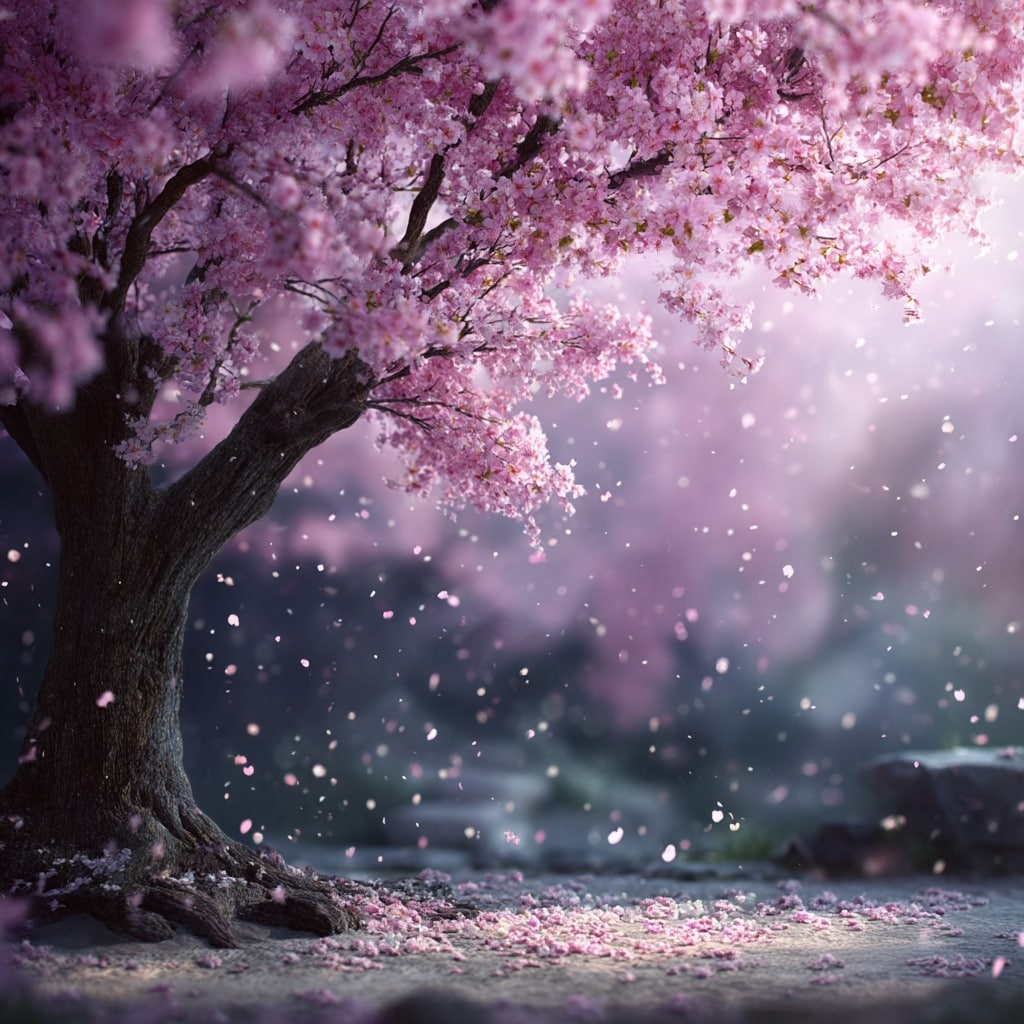
The sakura tree, also known as the cherry blossom, is one of the most cherished tree species in the world—especially in Japan, where it symbolizes renewal, beauty, and the fleeting nature of life. Each spring, streets, parks, and mountain paths come alive with the soft blush of sakura blooms, drawing millions to witness their short-lived but spectacular display.
Sakura trees are small to medium-sized, often growing to around 20–40 feet tall, with branches that spread outward in a graceful, rounded shape. Their blossoms range from pale pink to bright white and typically last just a week or two, depending on the weather. This brief blooming period is part of what makes the sakura so meaningful—it’s a celebration of life’s impermanence and beauty.
In Japanese culture, sakura season is more than just a floral event. It’s a time for hanami (flower viewing), where families and friends gather under the blooming trees for food, music, and reflection. The tree is also a symbol used in art, poetry, and even traditional medicine. Sakura leaves are used to wrap sweets, while the flowers can be steeped into tea or preserved for ceremonies.
Sakura trees are surprisingly resilient. While they prefer cooler climates, some species can adapt to warmer zones, especially when planted in well-drained soil with full sun exposure. Their roots spread wide but not aggressively, making them suitable for gardens, parks, and even urban settings.
Aside from their beauty, sakura trees also attract beneficial pollinators like bees and butterflies, supporting biodiversity during the early days of spring. Their blossoms contain carotenoids, which give them a vibrant glow and help protect the petals from UV damage.
🌼 Did you know? The term “sakura” comes from the Japanese word meaning “a hundred thousand rays,” referring to the dazzling burst of color that appears when the trees bloom all at once.
Ginkgo Tree: A Living Fossil With Healing Power
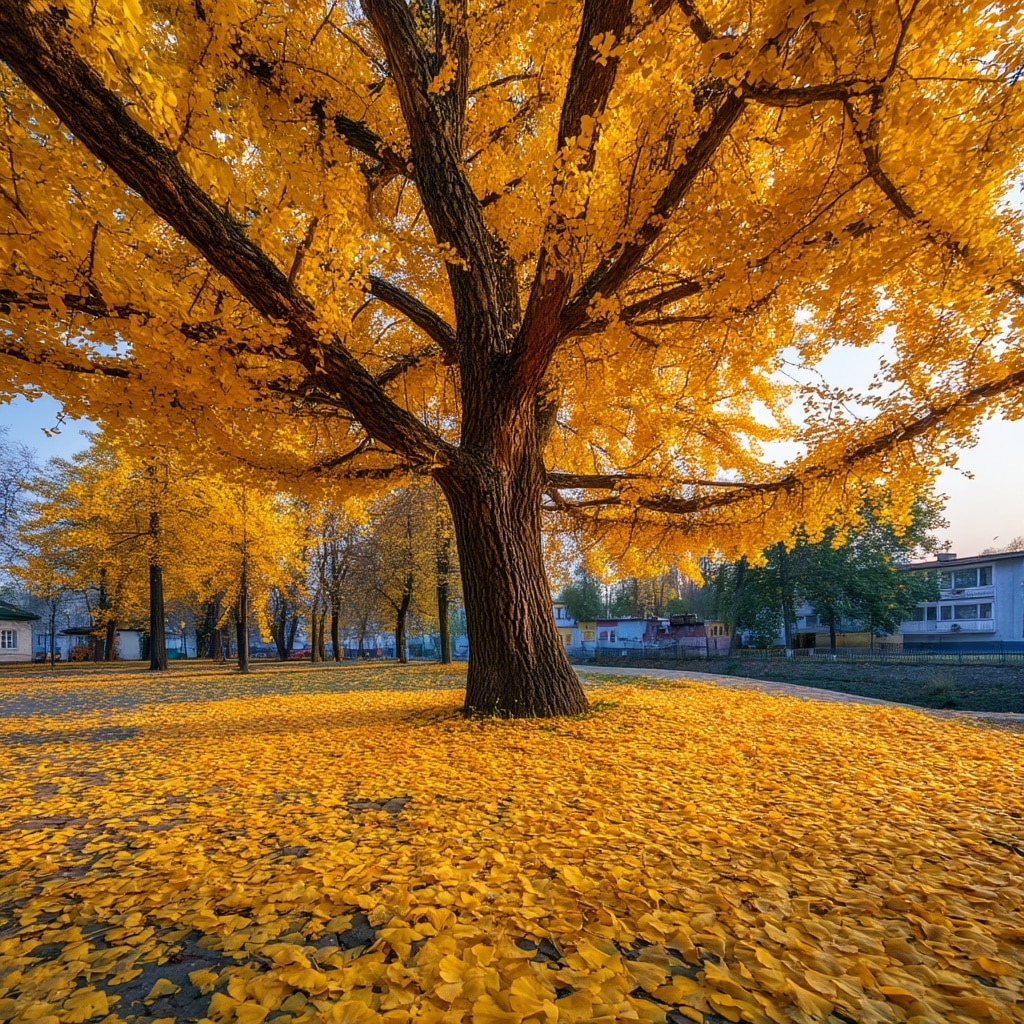
The ginkgo tree, often called a “living fossil,” is one of the oldest surviving tree species on Earth—dating back over 200 million years. Its fan-shaped leaves, bright yellow fall color, and remarkable resilience have made it a favorite in urban landscapes, temple gardens, and traditional medicine alike.
Ginkgo trees are native to China, where they have been cultivated for centuries in sacred temple grounds. Today, they are widely planted around the world, not only for their beauty but also for their pollution resistance and low maintenance. This tree thrives in cities because it tolerates compacted soil, air pollution, and even pests.
What sets the ginkgo apart is its leaf shape. Unlike most trees, ginkgo leaves are flat, with a split down the middle, resembling a maidenhair fern—hence the nickname “maidenhair tree.” In autumn, these leaves turn a dazzling golden yellow, often falling all at once in a spectacular seasonal moment.
Ginkgo trees can live for centuries. Some specimens in Asia are believed to be over 1,000 years old. Their longevity is partly due to their resistance to disease, insects, and even radiation—famously, several ginkgo trees survived the atomic bomb in Hiroshima and are still thriving today.
Medicinally, the ginkgo leaf has been used for centuries in herbal remedies. It’s said to improve memory, reduce inflammation, and enhance circulation. Modern supplements made from ginkgo extract are among the most popular herbal products worldwide.
While male trees are typically preferred for urban planting due to the strong odor produced by the fruit of female trees, both sexes play a vital role in the tree’s survival and diversity. If you’re considering planting a ginkgo in your garden, opt for a grafted male cultivar to avoid unwanted fruit drop.
🌳 Ginkgo trees work well as shade trees in city streets or parks, providing filtered light and seasonal interest without the aggressive roots found in some other urban species.
Bonsai Tree: The Art of Miniature Nature
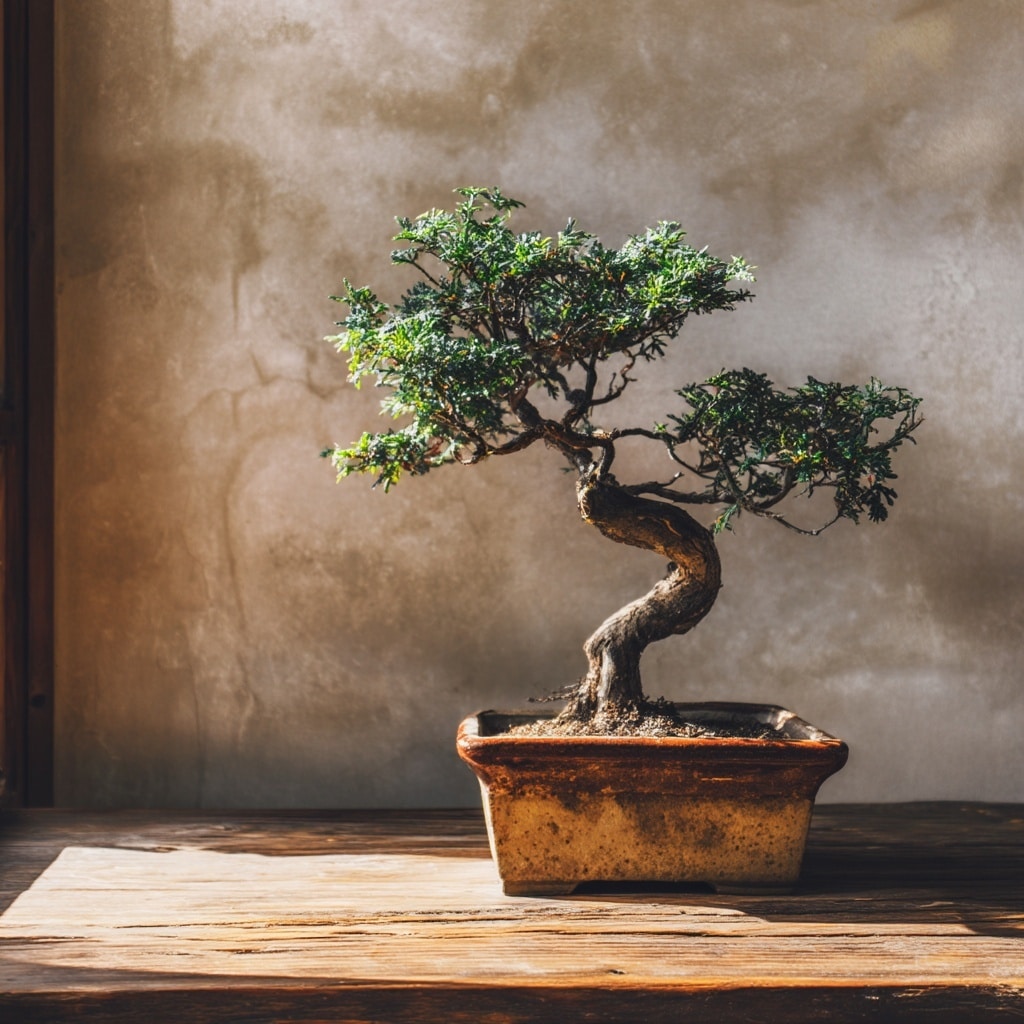
The bonsai tree is more than a plant—it’s a living piece of art. Rooted in ancient Chinese and Japanese traditions, bonsai is the practice of growing and shaping trees in miniature form. Each one tells a story of patience, care, and harmony between nature and human hands.
Despite their small size, bonsai are real trees—not shrubs or genetically modified plants. They are cultivated from ordinary species like maple, juniper, pine, or ficus, and shaped over time through pruning, wiring, and strategic potting. The goal is to replicate the appearance of a full-grown tree in a container, mimicking nature’s beauty on a much smaller scale.
Creating a bonsai requires dedication. Growers begin by selecting a healthy sapling and trimming it to encourage desired growth patterns. Over the years, branches are trained into elegant shapes, roots are pruned to fit shallow pots, and every detail is considered—from trunk angle to leaf size.
Bonsai trees thrive best in well-drained soil, with access to sunlight and regular watering. They must be repotted every few years to prevent root-bound stress and maintain health. Unlike most ornamental plants, bonsai must be tended to daily, which is why they are often seen as tools for mindfulness and meditation.
While they’re commonly kept indoors, many bonsai species prefer outdoor conditions, especially if they are hardy varieties accustomed to seasonal changes. The art of bonsai reflects a deep respect for nature’s balance—and offers a quiet lesson in patience for anyone willing to learn.
💡 Interesting fact: “Bonsai” is a Japanese word meaning “planted in a container,” but the practice actually began in ancient China, where it was called “penjing.”
Whether you’re a seasoned gardener or a beginner, growing a bonsai can be one of the most rewarding ways to connect with the natural world, one tiny tree at a time.
Conclusion: Every Tree Tells a Story
From towering oaks to miniature bonsai, each tree offers a unique blend of beauty, resilience, and ecological value. Whether it’s the cultural symbolism of the sakura, the healing potential of the ginkgo, or the quiet artistry behind bonsai, trees are more than just plants—they’re living reminders of our deep connection to the natural world.
As gardeners, nature lovers, or simply curious minds, understanding the uniqueness of each tree helps us make better choices for our landscapes, support local ecosystems, and appreciate the green giants (or minis) in our lives just a little more.
Whether you’re planting in your backyard, caring for a bonsai, or simply admiring the beauty of a willow by the water—there’s always a tree waiting to inspire.

